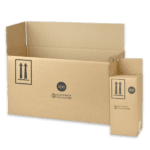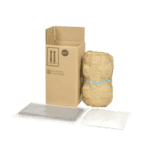About a year ago, Transport Canada announced its first steps on a plan to allow dangerous goods delivery by drone. Drones have already been used for many types of movement of non-dangerous goods in both the consumer and industrial spheres. Dangerous goods in small amounts seemed to be the next logical area to explore.
The anticipated changes to the Transportation of Dangerous Goods Regulations (TDGR) that would allow such shipments may still be some time away – after all, COVID and supply-chain issues have delayed a lot of the dangerous goods updates Transport Canada had planned. However, that doesn’t mean that dangerous goods can’t take to the skies in drones at all. For example, Drone Delivery Canada, a company specializing in, you guessed it, delivering cargo by drones, has taken steps to get some types of dangerous goods airborne.
Steve Magirias, CEO of Drone Delivery Canada, was kind enough to speak to me about how his company has been able to start drone delivery of dangerous goods before Transport Canada has issued the official amendment. You can currently get permission for “special drone flight operations” by obtaining a Special Flight Operations Certificate (SFOC). This certificate allows you to operate drones outside the normal rules and regulations if you follow the conditions laid out in the document. There are a number of situations where an SFOC could come in handy, such as flying a drone above normal altitudes or to cover special aviation events. These options include if “you want to fly your drone carrying dangerous or hazardous payloads.”
Mr. Magirias said that the first types of dangerous goods his company was interested in carrying by drone were urgent medical goods. These can be difficult to transport quickly to remote sites or to scenes of accidents. Imagine, say, a train derailing in the Rockies away from towns or highways. Drones can help transport things like first aid supplies and battery-powered medical equipment. They can even cross bodies of water such as lakes easily to reach sites such as cottages or fishing camps quickly.
The usefulness of drones doesn’t end at emergencies. Pandemic-related materials such as hand sanitizer could be droned in to northern or other isolated communities in small quantities when larger shipments aren’t feasible. A future area of interest is the transportation of organs and blood for medical purposes.
Currently, Drone Delivery Canada uses units powered by lithium batteries, which makes them most appropriate for small shipments over limited distances, and ensures they are a quiet, eco-friendly option. New generations of drones with internal combustion engines will be able eventually to expand service to up to 200 kilometers carrying a payload of nearly 100 kilograms. In addition, they may be able to eliminate the need for the drone to be under constant visual surveillance from the ground.
Mr. Magirias stresses that these are early days yet for drone deliveries, particularly those involving dangerous goods. But the market is growing and new technologies like these will introduce a new flexibility in delivering products quickly and efficiently. It’s good to see regulators, as well as industry, are not leaving dangerous goods behind as these innovations grow.
We would like to thank Steve Magirias for taking the time to discuss his company’s plans and operations with us. It’s a fascinating new angle on transportation.
Do you have questions about battery-powered equipment such as drones? Are you interested in keeping track of Transport Canada’s plans? Contact ICC Compliance Center here at 888-977-4834 (Canada) or 888-442-9628 (U.S.) and ask for one of our regulatory experts. We can advise you on current and upcoming regulations.
Sources:
Drone Delivery Canada, Reimaging the Way You Deliver
Transport Canada, “Get permission for special drone operations”
Transport Canada, “Flying your drone safely and legally”
International Air Transport Association (IATA), “Unmanned Aircrafts Systems (UAS) – Drones”
Stay up to date and sign up for our newsletter!
We have all the products, services and training you need to ensure your staff is properly trained and informed.
 4G UN Combination Boxes |
 Transportation of Dangerous Goods (TDG) Regulations |
 4GV Securepacc Complete Shipping Kit – 1 x Molded Pulp Pod for Liquids, Solids & Lithium Batteries |







 ICC USA
ICC USA ICC Canada
ICC Canada